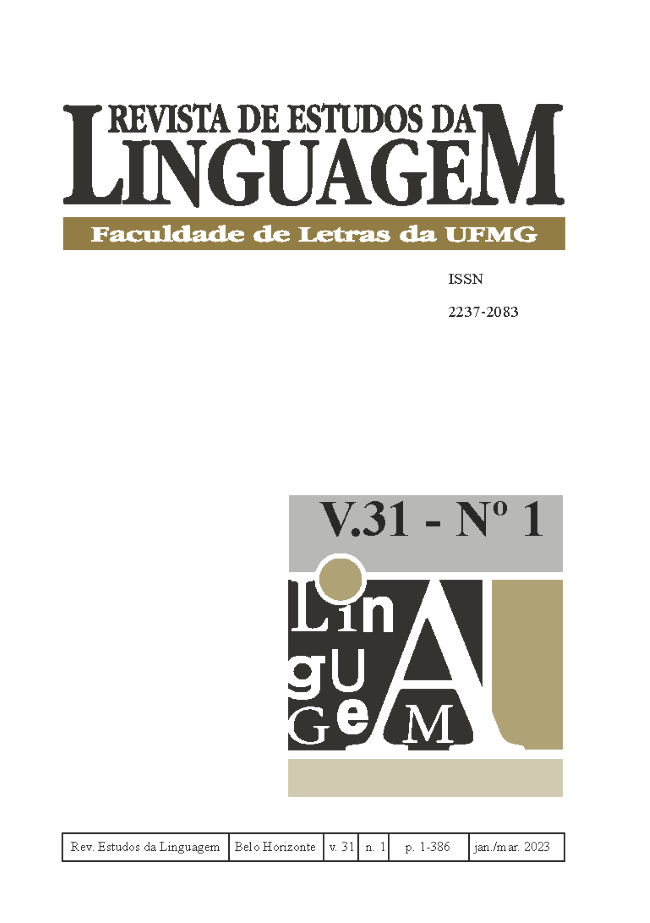Sândi Vocálico Externo no Português Vernacular Santomense
DOI:
https://doi.org/10.17851/2237-2083.31.1.176-219Palavras-chave:
Sândi, Fonologia, Português, Elisão, Degeminação, DitongaçãoResumo
O objetivo deste artigo é propor uma descrição dos três processos de sândi vocálico externo no português vernacular de São Tomé (PST): a degeminação (DG), a elisão (EL) e a ditongação (DT). A partir de um corpus composto por 113 sentenças distintas que apresentavam o encontro vocálico em fronteira de palavra (V#V), analisamos a produção de seis informantes santomenses, totalizando 216 ocorrências por falante ou 1315 tokens totais. Com auxílio do Praat, inspecionamos os dados e mensuramos o encontro vocálico e, quando este era desfeito, a vogal resultante, de modo a detectarmos a implementação dos fenômenos. Esses, por sua vez, também foram analisados conforme diferentes fronteiras (palavra e frase fonológica; sintagma entoacional) e proeminências prosódicas (lexical e de palavra fonológica), além de serem considerados fatores segmentais como a qualidade vocálica dos segmentos-alvo. Constatamos que os três processos são produtivos no PST: 32% DG; 36% EL; 52.5% DT. Ademais, ocorrem em diferentes fronteiras prosódicas: palavra fonológica (ω + ω), frase fonológica (ϕ + ϕ), e, no caso da ditongação, entre sintagmas entoacionas (IP+IP) desde que sua fronteira não seja delimitada por pausa. Em relação ao acento, a proeminência da frase fonológica foi o fator preponderante para impedir os processos em evidência, bloqueando a degeminação,caso o acento da segunda vogal coincidisse com o acento da frase fonológica. Já para a elisão e para a ditongação, o bloqueio ocorreu quando as duas vogais portavam o acento da frase fonológica.





